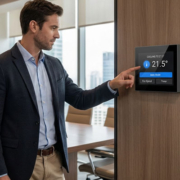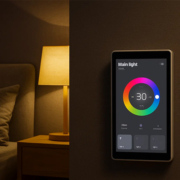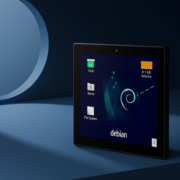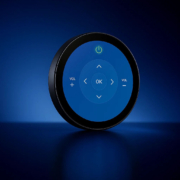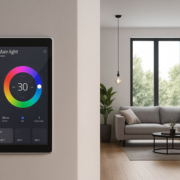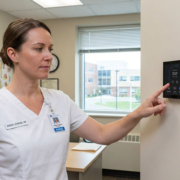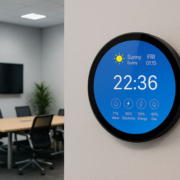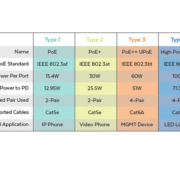Industrial HMI Selection Guide: How to Choose the Most Suitable Smart Control Solution
How to Choose the Most Suitable Smart Control Solution
The Human-Machine Interface (HMI) is the critical communication bridge between operators and industrial machinery. In the era of Industry $4.0$ and smart manufacturing, choosing the right HMI is no longer just about selecting a screen; it’s about deploying a Smart Control Solution that enhances efficiency, safety, and data intelligence.
A well-chosen Industrial HMI acts as the digital nerve center of an operation, providing intuitive visualization and control. However, the sheer variety of products—ranging from basic panel meters to high-end industrial PCs—makes the selection process complex. This guide outlines the essential criteria for choosing the most suitable smart control solution for your specific industrial application.
Define the Application Environment and Requirements (The “Where” and “What”)
The first step is to thoroughly understand the conditions under which the HMI will operate and the primary tasks it needs to perform.
| Selection Factor | Key Considerations | Smart Solution Implications |
| Environmental Durability | Temperature & Humidity: Will it be exposed to extreme cold/heat? | Choose wide-temperature range models. |
| Contaminants: Dust, dirt, oil, chemicals? | Require high IP Ratings (e.g., IP65, IP66, or IP69K for wash-down areas). Look for stainless steel or anti-corrosion casings. | |
| Vibration/Shock: Mounted on a moving machine or a stable control room? | Demand robust, fanless designs with high shock/vibration resistance certifications. | |
| Regulatory Compliance | Are there certifications needed (e.g., UL, CE, ATEX for hazardous locations)? | Mandatory for safety-critical and regulated industries (e.g., Oil & Gas, Pharma). |
| Operator Tasks | Is the HMI mainly for data monitoring, simple control, or complex troubleshooting? | Impacts required screen size, resolution, and software complexity. |
Evaluate Hardware and Performance (The “How Powerful”)
Smart Control Panel Solutions require processing power and robust connectivity to handle modern data loads.
1. Performance and Scalability
- Processor (CPU) & Memory (RAM): For basic control, a standard ARM or RISC-based HMI is sufficient. For advanced visualization, data logging, analytics, or running multiple applications (like SCADA), a more powerful Industrial Panel PC (x86) is necessary.
- Storage: Choose industrial-grade SSDs for reliability, especially in high-vibration environments. Consider the capacity needed for historical data logging and recipe management.
- Future-Proofing: Select a platform that allows for scalable software upgrades and easy integration of future machine vision or AI modules.
2. Connectivity and Protocol Support
- Communication Ports: Verify compatibility with existing PLCs, drives, and sensors (e.g., Ethernet/IP, Profinet, Modbus TCP/RTU, OPC UA).
- IoT/Cloud Readiness: A truly smart HMI must support MQTT or other lightweight protocols for secure data transmission to cloud platforms or MES (Manufacturing Execution Systems).
- Remote Access: The HMI should offer secure, built-in features for remote monitoring and troubleshooting, reducing on-site maintenance needs.
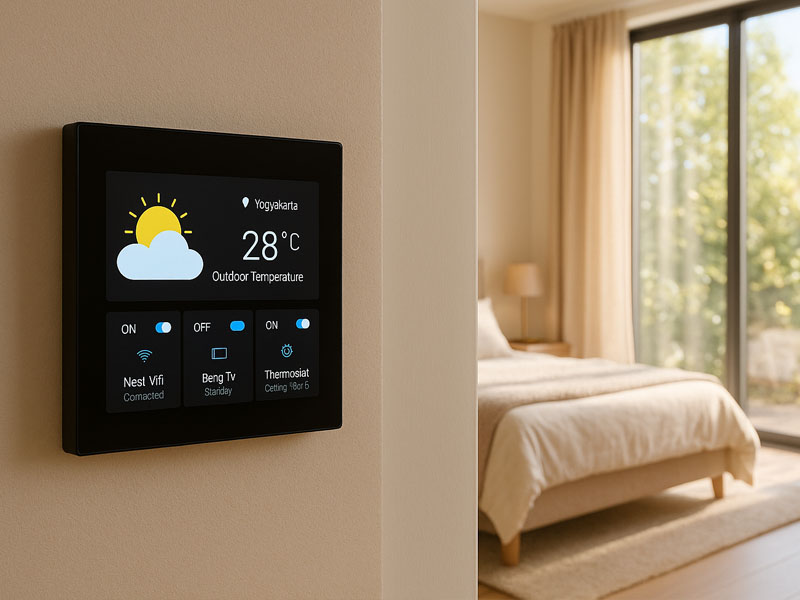
smart control panel
Focus on Software and User Experience (The “User-Centric”)
The value of a smart HMI lies in its ability to present complex information clearly and intuitively.
1. Software Platform and Development Tools
- Ease of Development: Does the vendor provide an intuitive, low-code/no-code HMI configuration software? Are there reusable templates and libraries (faceplates) to speed up deployment and ensure consistency?
- Visualization: Look for support for advanced graphics, $3D$ rendering, and high-resolution displays to create rich, contextual dashboards.
- Operating System (OS): Consider if a fixed OS (like proprietary runtimes) is adequate, or if a standard OS (like Windows/Linux) is needed to run third-party security or data analysis software.
Final Considerations – Total Cost and Vendor Support
Choosing an HMI is a long-term investment. Look beyond the initial purchase price.
- Total Cost of Ownership (TCO): Include the cost of the HMI unit, software licensing (runtime and development), maintenance, and replacement parts.
- Vendor Reputation and Support: Choose a vendor with a proven track record, long-term product availability (avoiding obsolescence issues), and reliable technical support.
- Training and Integration: Assess the complexity of integrating the new HMI with your existing control architecture.
The transition to Smart Control Panel Solutions requires a holistic approach to HMI selection. By systematically evaluating your Environment, Performance Needs, Software Capabilities, and Long-Term Support, you can move beyond simple screen replacement. The ideal Industrial HMI is not merely a display; it is an intelligent, rugged, and user-centric platform that empowers your operators and drives your manufacturing operation closer to the goals of Industry $4.0$.

